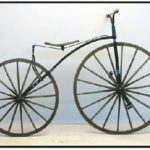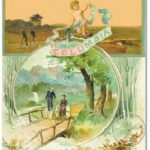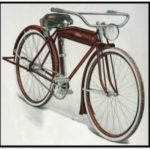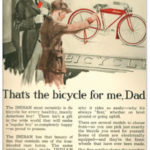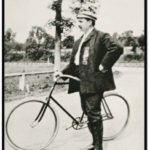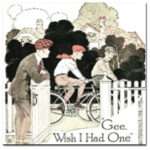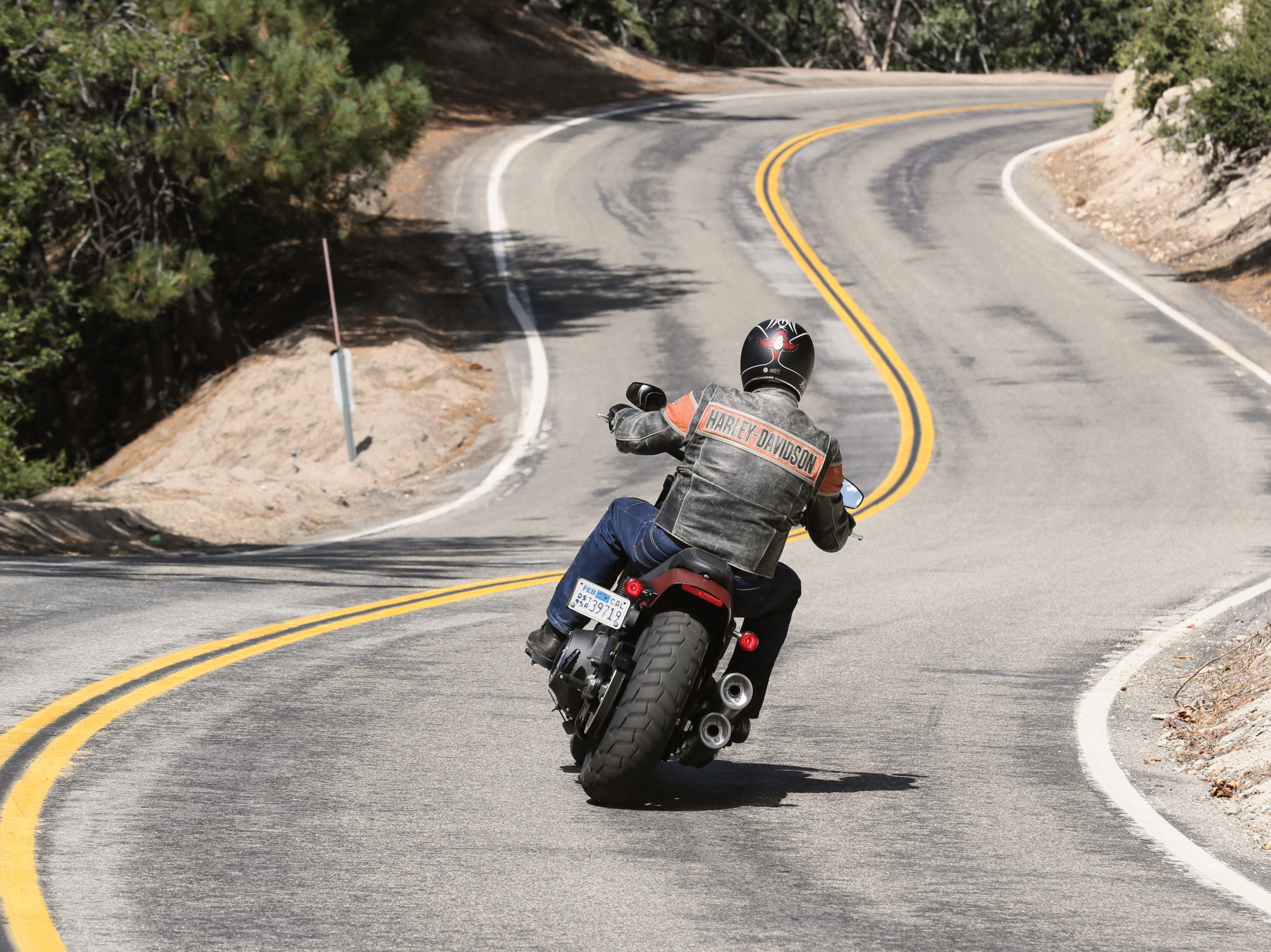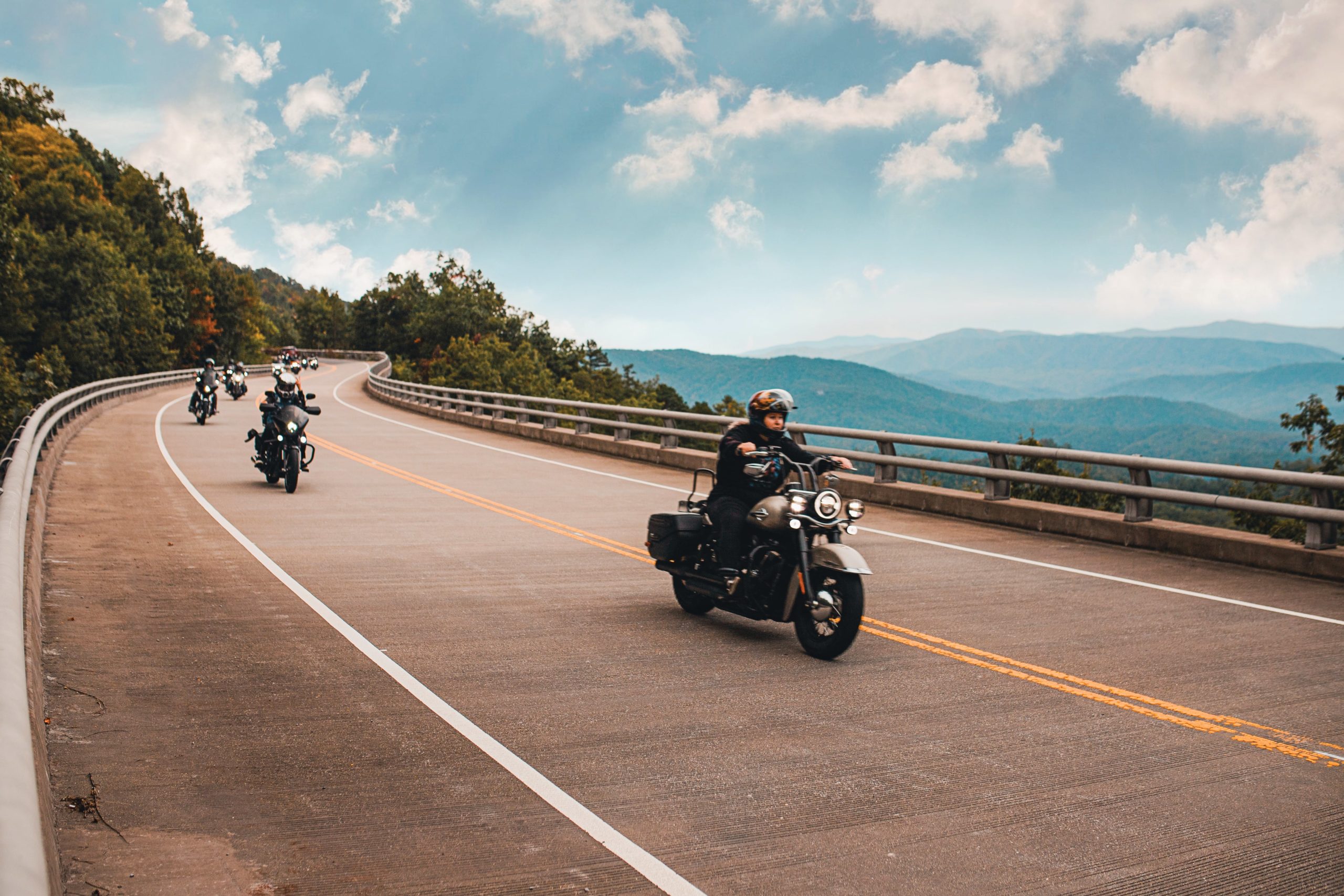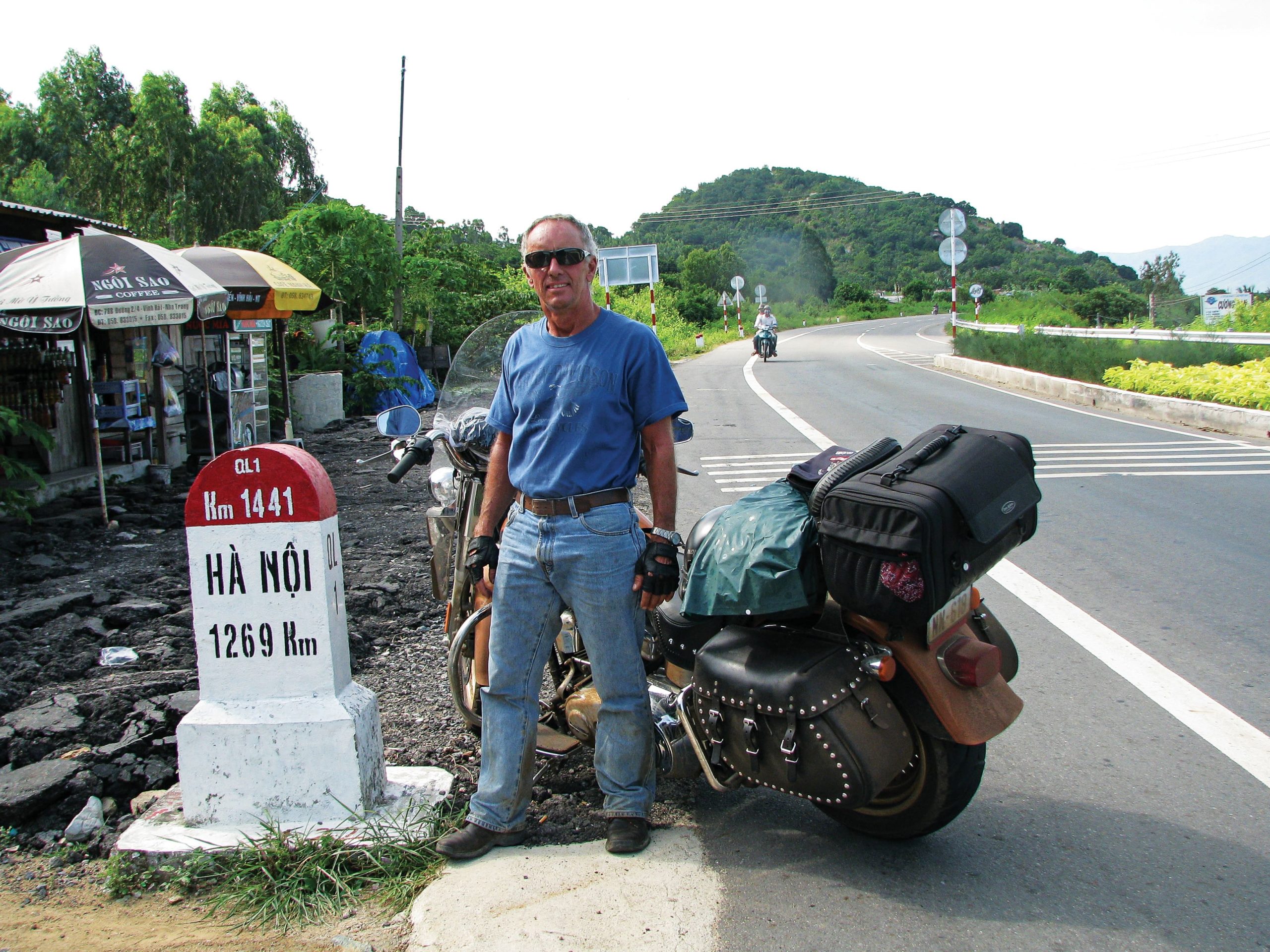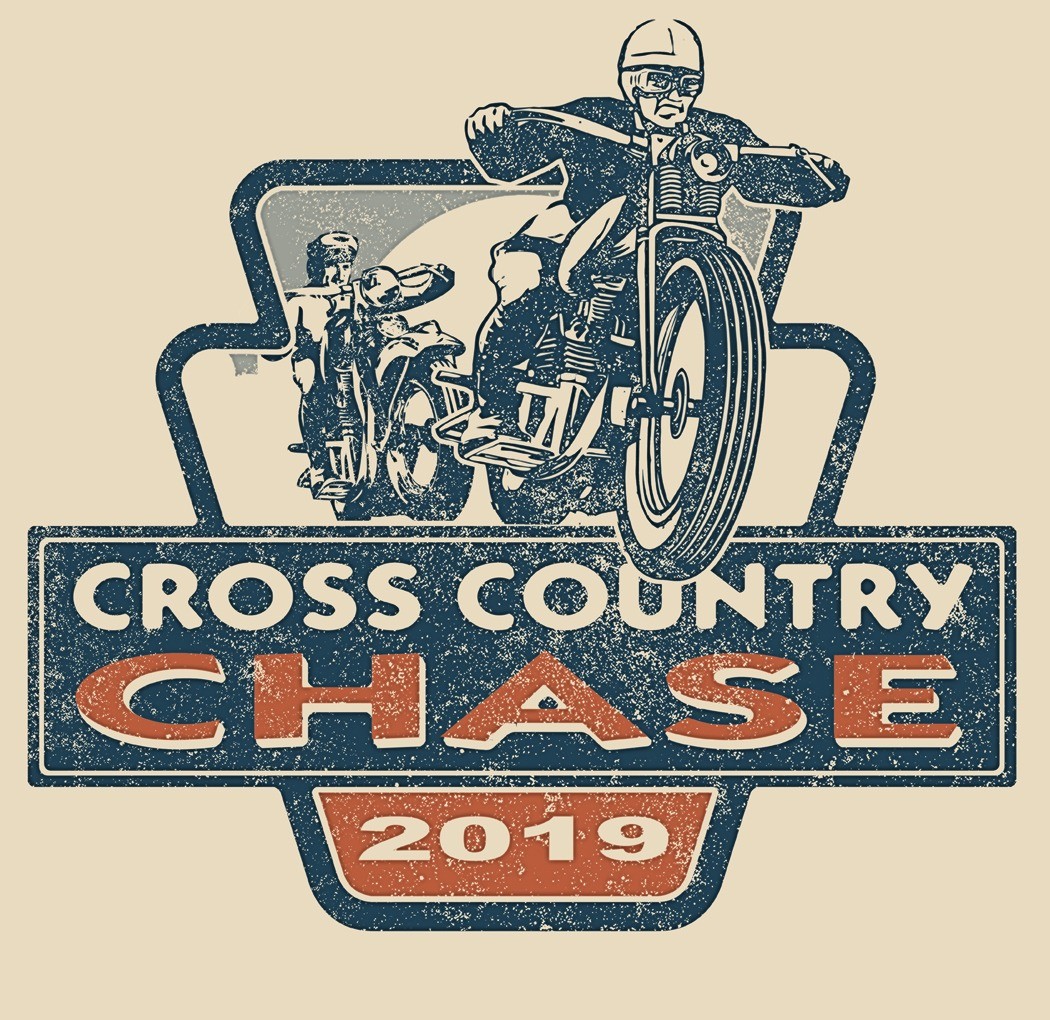Bicycles to motorbikes—and back
140 years of shared legacy
The convergence of two separate developing technologies gave birth to the motorcycle at the beginning of the 20th century. One “parent” of the motorcycle has been written about in previous issues of Thunder Press (“The History of the Internal Combustion Engine,” Jan. 2009 and “The Benzine Motorcycle,” Dec. 2008). The other techno-parent was the bicycle.
A student of Leonardo da Vinci did not sketch a bicycle in 1490 and blacksmith Kirkpatrick MacMillan did not build one. These myths have proved to be hoaxes. Although crude-running machines are reputed to have been in existence as early as 1790, the story begins when Baron Karl Drais von Sauerbronn invented the “Laufmaschine” (running machine) in 1818. They became known as Draisiennes, and looked like a crudely built modern bicycle without pedals, and the rider actually ran while straddling it. Derisively called “hobby horses,” they probably worked well when going down a slight grade, but the rider’s feet were also the brakes. It was invented after a drought had devastated livestock feed in Europe and quickly fell out of favor once horses could be ridden again.
French carriage maker Ernest Michaux invented the modern bicycle pedal and crank in 1861. This heralded the era of the velocipede, which was more commonly referred to as a “boneshaker.” Unlike the Draisienne, the rider was positioned over the front wheel, which was pedaled just like the tricycles we grew up with as children. The velocipede had no suspension, and roads were rutted dirt, cobblestones, or relatively smooth brick. The “boneshaker” nickname was merited.
A British engineer named James Starley invented the “Penny-Farthing” in 1871. This became known as the “high-wheel” bicycle. While a bit tricky when starting or stopping, to say nothing of nasty falls incurred from such a high perch, the large-diameter front wheel with a wonderful 2:1 crank ratio and rubber tires made for the first relatively comfortable bicycle ride.
H. J. Lawson invented a bicycle in 1874 that had two wheels of the same size and a chain from the crank to the rear axle. These later became known as “safety bicycles,” and the reason why is another no-brainer. Yet the high-wheel bicycle remained the fad until the early 1890s, and the first application of Lawson’s invention was the creation of tricycles and quadracycles for ladies and respectable gentlemen like doctors and the clergy.
In 1893, bicycle designs appear with diamond-shaped frames, roller chains and pneumatic tires. It was this design that made the high-wheeler obsolete. Such frames were easier to fabricate in metal, roller chains provided smoother propulsion, and pneumatic tires offered a more cushioned ride than solid rubber.
Sylvester Roper built the first motorcycle in 1868. He had built a steam-powered wagon prior to the Civil War and was closely associated with at least two Massachusetts inventors who also built steam wagons in the mid-19th century, but his steam-powered velocipede was a radical design decades ahead of its time. He would improve his designs and exhibit them over the next 26 years, but the next recorded example of a steam-powered bicycle would be Lucius D. Copeland’s high-wheeler (small wheel in front; large in back) of 1884. Copeland finally went with a forecar design (small wheel in back; two large parallel wheels in front with a saddle for the operator and a front seat for the passenger between them) in 1884 and co-founded the Motor Cycle Company in 1890.
The vehicles designed by Copeland and Roper were based on the bicycles of the time. Just as Roper’s first was that of a “boneshaker,” his final design of 1895 was built around a Columbia Model 36 safety bicycle with a diamond frame. (Both motorcycles still exist.) Even though they generally receive the credit for building the first gasoline-powered motorcycle, the “Reitwagen” built by Gottlieb Daimler and Wilhelm Maybach in1885 was simply a wooden “boneshaker” that had been acquired as an inexpensive test bed for their new, compact gasoline engine.
Henry and Wilhelm Hildebrand were producing bicycles in Munich and decided to develop a steam-powered velocipede in 1889. When this didn’t work, they teamed up with Wolfmüller and Geisenhof, who created a four-stroke, 1498cc two-cylinder engine that was fitted into the modified frame of the Hildebrand velocipede, and created the first production motorcycle in 1894. As with Copeland and Roper, the Hildebrand brothers recognized the potential of combining an engine with a bicycle and all three illustrate the convergence of two rapidly developing technologies: the bicycle and small engines.
DeDion-Boulton began producing steam-powered vehicles in 1883 and their first gasoline-powered tricycle was shown in 1895. The steam vehicles were heavy wagon-type designs, but their revolutionary gasoline engine was fitted to a slightly modified pedal tricycle. It was this internal combustion engine that bicycle makers would begin fitting to frames to create the motorcycle industry.
Paul Sorg was producing the Racycle in 1895. Orient was manufacturing the Chainless bicycle in 1898. In 1900 Pierce Arrow was selling a shaft-drive bicycle that featured a telescopic shock absorber under the seat. Col. Albert A. Pope (Columbia bicycles) joined the bicycle trust, which also produced Rambler, Crescent, Monarch, Imperial, Tribune and Cleveland. All would appear as motorcycle brands after Pope acquired them in 1903. Glenn Curtiss was fabricating bicycles before he began building motorcycles. The same was true for George Hendee, Oscar Hedstrom, George Holden, Charles H. Metz, George Holley and the Marsh brothers. Excelsior manufactured automotive and bicycle parts prior to entering the motorcycle business and Mitchell produced cars, bicycles and motorcycles. Aurora Automatic Machine Company was making cranks for Indian bicycles before Oscar Hedstrom’s engine propelled them into the motorcycle business.
The fact that motorcycles evolved from bicycles is well documented. It’s the production of bicycles by motorcycle companies that seems to have been partially lost to history.
Indian bicycles first appeared in 1898, and by 1900 the small shop on Worthington Street in Springfield was fabricating 4,000 bicycles a year. In 1906, the Hendee Manufacturing Company was still manufacturing bicycles at this location even though more than a thousand motorcycles were also produced in this small shop in 1905.
“It is fitting to remark also that the manufacture of motocycles is our whole business, and that during the past year we have moved into our new factory, one four times larger in size and capacity than our former plant. It is of four stories and basement, of most modern construction and equipment, and every part of it and every man in it is devoted to the production of Indian motocycles and nothing else.”—page 5, 1906 sales brochure for Hendee Manufacturing Co.
Even while expanding the State Street facility and becoming the world’s largest motorcycle manufacturer, bicycle production continued at the Worthington address until at least 1909. In 1910 the company had 3,000 agents and had set up assembly factories in Chicago and San Francisco. In 1911 they were manufacturing aircraft engines and selling motorcycles around the world, yet the 1912 sales catalog features two entire pages dedicated to the Motobike (bicycle). By 1916 the Hendee Manufacturing Company was aggressively advertising both men’s and women’s Indian bicycles in national magazines.
Motorcycle companies had discovered that bicycles could promote motorcycle sales, as children would encourage their fathers to visit motorcycle dealerships to look at the bicycles. A 1919 Harley-Davidson bicycle ad even states, “Take Dad with you to see the new models.” Then, as now, children would pretend that their muscle-powered cycles were actually powerful motorbikes, and so what could be better than a bicycle that actually looked like a motorcycle? The 1912 Model 91-T Indian Motobike was equipped with electric lights, and the dry cell batteries fit in the pseudo gas tank. Even the Men’s Motobike, which didn’t have electrics, was styled with a skirted front fender and a rear wheel stand just like the current motorcycle models. Iver Johnson did the same and Harley-Davidson entered the market in 1917 with the Model 420 Motorcyke. All three companies also offered conventional-styled bicycles and the ever-popular racers, roadsters and ladies models.
Harley-Davidson bicycles were made by the Davis Sewing Machine Company of Toledo, Ohio, from 1917 to 1922. One of the leading manufacturers of bicycles in the U.S., Davis also produced Dayton bicycles (and the Dayton Motor Wheel). One of their 1913 models was the Three Arch-Truss Roadster that used three braces between the main tube, and some 1912–13 models had a spring fork that replaced the fender with a leaf spring that pivoted where the fork met the head tube as on the 1911 Indian motorcycles. Whether Hendee Manufacturing Company was producing their own bicycles or sub-contracting them is unknown, but the “Chief” model bicycles—painted red—were made by Davis and sold exclusively through the Sears, Roebuck catalog.
The acquisition of the Merkel Motor Wheel by Hendee Mfg. Co. at auction in 1918 was intended to bolster sales of Indian bicycles. By the time it was improved and reintroduced in June 1922, the bicycle craze was over. The Davis company went bankrupt in 1922 and Indian bicycles last appeared in the company’s sales catalogs in 1923. Indian would make other attempts, including contracting a German manufacturing firm in 1937 and a British bicycle company in 1950. The Motobike Excelsior came out in 1935 and Evinrude would produce the Streamflow in 1937. Harley-Davidson would reintroduce bicycles in 1998 with the limited edition Velo Glide, but the complete history of bicycles sold under U.S. motorcycle brands remains to be written.


